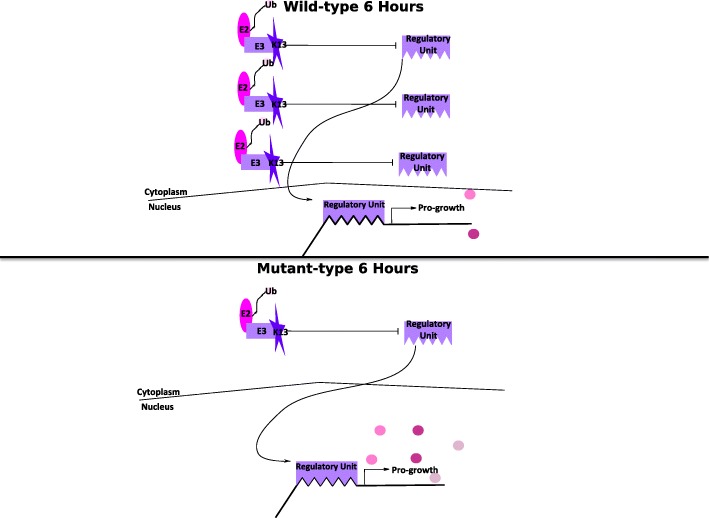Fig. 7.
Proposed model of K13’s biological role. The crystal structure of K13 resembles the E3 ubiquitin substrate ligase adapter Keap1, which is known as a stress response regulator in humans. The structural similarity and the data suggest that K13 functions similarly to Keap1 promoting the inhibition of a pro-growth regulatory unit via ubiquitination of a regulatory element that is subsequently degraded by the proteasome. In this model down-regulation of K13 at 6 h would result in an increased number of functional regulatory units promoting the transcription of pro-growth genes, which would explain the transcriptome shift at 6 h towards latter life-cycle transcriptomes

